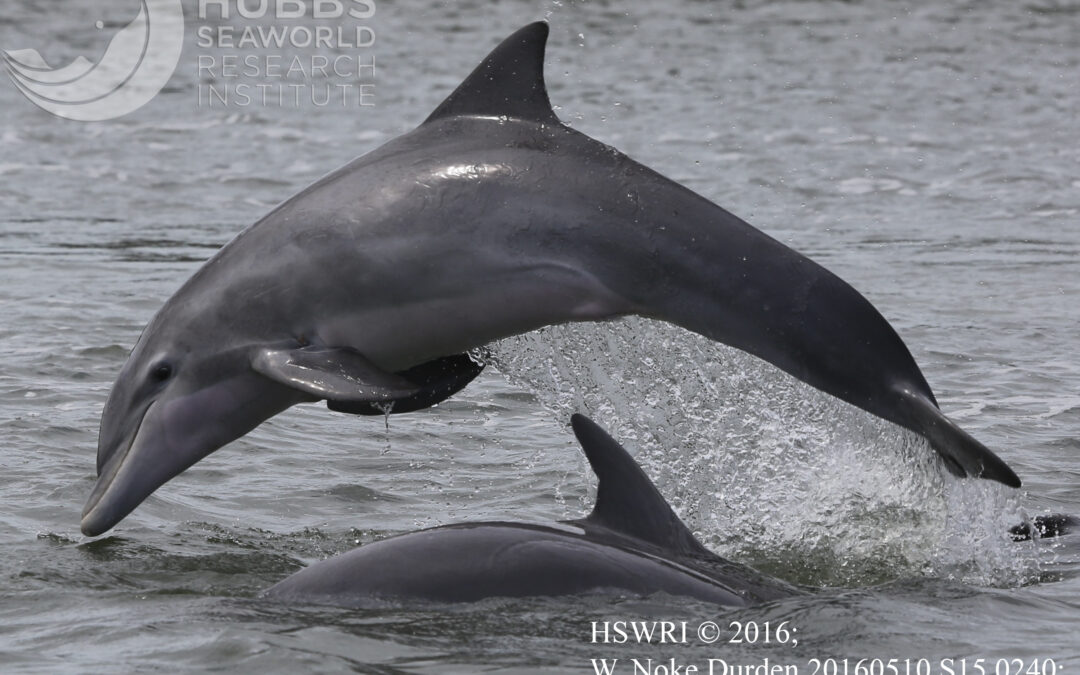Contacts:
Peter James MacCracken, APR | pjm@strategic-communications.com | (619) 275-4110
Celina Maggi | cmaggi@hswri.org | (619) 909-3449
By Jim Waymer for Florida Today
Sometimes, they just take the bait. Other times they get tangled up in blue, or other shades ofbraided fishing line.
A new study by Hubbs-SeaWorld Research Institute found many bottlenose dolphins in the Indian River Lagoon choke on our lines, lures and other fishing gear, or they die tangled in the line. More die from illnesses worsened by pollution in the lagoon.
Their paper was published recently in the journal Wildlife Disease.
Like manatees, bottlenose dolphins already have been emaciated and immune compromised because of a lack of food in the Indian River Lagoon. Years of toxic algae blooms that smothered seagrass beds have unraveled the basic fish foundations of the lagoon food web.
What did they find?
From 2002 to 2020, 790 bottlenose dolphins that were stranded (live or dead) or otherwise in need of intervention were reported within the lagoon.
Most died in the summer months.
Inflammatory disease and trauma were the most common cause of death. Pneumonia and other respiratory diseases were particularly common.
Was that unusual?
Not really.
“It’s common for young animals to have pneumonia,” said Wendy Noke, the Hubbs-SeaWorld research scientist and lead author of the paper.
But studies in recent years have found the lagoon dolphins are more susceptible to infections because they are immune compromised by pollution and toxic algae blooms.
Why are lagoon dolphins immune suppressed?
Scientists aren’t 100% sure but pollution and excess algae are part of the reason. A 2020 study found an algae toxin 1,000 times deadlier than cyanide lingers at trace levels in the livers of bottlenose dolphins in the lagoon, remaining there even when the algae is not blooming.
The same species of algae has been blooming this summer in the lagoon. It’s the same same algae that glows bright blue like fairy dust when stirred up at night. The poison it emits iscalled saxitoxin.
What were the other leading causes of death?
Trauma accounted for 36% of lagoon dolphin strandings. Of those trauma deaths, 58% were caused by human activity.
The majority of trauma cases were due to entanglement, fishing gear or other debris ingestion, and propeller strikes.
Natural trauma, such as shark bites or stingray interactions, accounted for 12% of all cases, and trauma of undetermined origin was identified in 4% of cases.
How does fishing line harm dolphins?
Fishing line wraps around their fins, sometimes to the point of amputation.
Braided line is the worst. Dolphins can swallow it, causing them to asphyxiate, or they get tangled in it.
“It’s causing severe lacerations to their appendages,” Noke said.
How many dolphins live in the Indian River Lagoon?
The dolphins that live in the Indian River Lagoon spend most of their lives there. Scientists estimate a population of about a thousand bottlenose dolphins from Mosquito Lagoon toJupiter.
Where in the Indian River Lagoon do dolphins seem most atrisk?
The Banana River Lagoon in Brevard County, where researchers find human activity is the No. 1 cause of death.
“Animals in that area don’t present very well,” Noke said. “Many if not all of them are thin to emaciated.”
“We’ve had so many entanglements this year,” she added of the dolphins found wrapped infishing line. “We’ve had a lot of calves (entangled in fishing line) this year. They don’t know necessarily to be cautious.” Calves of the same mother are winding up tangled up multipletimes, after the mother leads them to foraging areas with lots of fishing lines in the water.
“We’re seeing repeat offenders,” Noke said of the calves. “It has become a really big problem.”
Where do you call if you see a struggling dolphin or otherwildlife?
Florida’s Wildlife Alert Hotline: (888) 404-3922.
Link to Publication

